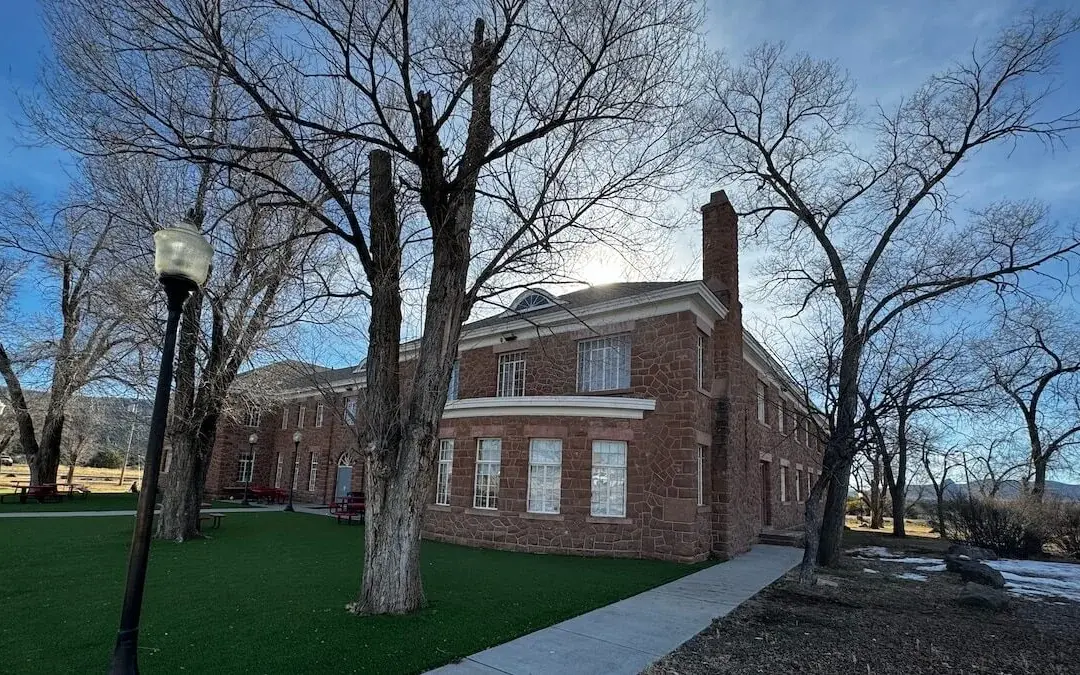 TrailBoss the raccoon cowboy here, ready to guide y’all through another amazing adventure, smack dab in the heart of the White Mountain, Arizona region.
TrailBoss the raccoon cowboy here, ready to guide y’all through another amazing adventure, smack dab in the heart of the White Mountain, Arizona region.
Put on your hiking boots, and grab your cowboy hat; we’re about to take a stroll through a favorite historic site that makes the Arizona White Mountain region the best place to kick back and enjoy.
So saddle up, and let’s hit the trail!
Exploring Fort Apache: A Journey Through Time in Arizona’s White Mountain Region
Discover the historical Fort Apache in Arizona’s White Mountain region. Explore its rich history, President Theodore Roosevelt’s visits, its status as a national landmark, remaining buildings, and how to get there.
Introduction
Nestled in the breathtaking White Mountain region of Arizona, Fort Apache stands as a testament to the rich tapestry of American history. This iconic fort has witnessed significant events, including visits by President Theodore Roosevelt, and has earned its place as a national landmark. In this blog post, we’ll explore the fort’s fascinating history, its importance as a cultural and historical site, the remnants of its storied past, and provide you with all the information you need to visit this captivating site.
Fort Apache: A Glimpse into the Past
Fort Apache was established in 1870, during a turbulent period of conflict between Native American tribes and the United States government. Originally built as a strategic military outpost, it played a crucial role in the Apache Wars, serving as a base for operations against the Apache tribe. However, its significance extends beyond its military history; it became a symbol of the complex interactions between different cultures and the challenges of westward expansion.
Presidential Visits and National Recognition
The fort’s historical importance was further highlighted by visits from President Theodore Roosevelt, who recognized the need for conservation and the protection of America’s natural and historical treasures. His visits underscored the fort’s significance in American history and helped pave the way for its designation as a national landmark.
Fort Apache as a National Landmark
Today, Fort Apache is celebrated not only for its military history but also as a symbol of perseverance, adaptation, and the blending of cultures. It has been designated a national landmark, ensuring its preservation for future generations to explore and learn from. The site encompasses more than just the military post; it includes ruins of Apache dwellings and other historical buildings, offering a comprehensive view of the area’s diverse history.
Exploring the Remnants of History
Visitors to Fort Apache can explore an array of surviving buildings and structures that offer a glimpse into the past. Key highlights include:
- Barracks: Once housing for soldiers, these buildings now serve as a tangible connection to the lives of those stationed here.
- Officer’s Quarters: These well-preserved structures reflect the lifestyle and social hierarchy of the fort’s inhabitants.
- Schoolhouse: An emblem of efforts to assimilate Native American children into American society, providing a poignant reminder of the fort’s complex legacy.
- Cemetery: The final resting place for both soldiers and Apache tribe members, symbolizing the intertwined histories of these communities.
Directions to Fort Apache
Fort Apache is located in the White Mountain region of Arizona, easily accessible from Phoenix or Tucson. From Phoenix, take US-60 E toward Globe, then merge onto AZ-77 N toward Show Low. Continue on AZ-260 E to Fort Apache. From Tucson, take I-10 E to US-60 E, then follow the same route via AZ-77 N and AZ-260 E.
Conclusion
Fort Apache is more than just a historical site; it’s a journey through time, offering insights into the complexities of American history, the resilience of the Apache tribe, and the beauty of the Arizona landscape. Whether you’re a history buff, nature lover, or simply seeking adventure, a visit to Fort Apache promises an enriching experience that connects you with the past in a profound and memorable way.
Visit Fort Apache
Embrace the opportunity to explore this national treasure. With its rich history, stunning scenery, and profound cultural significance, Fort Apache invites visitors to step back in time and experience the enduring legacy of America’s diverse heritage. Plan your visit today and discover the stories etched into the landscape of Arizona’s White Mountain region.
Respect and Preservation: Honoring Fort Apache’s Legacy
As we explore and enjoy the historical richness of Fort Apache, it’s crucial to approach with a sense of respect and responsibility. This site is not just a collection of buildings and artifacts; it’s a sacred ground that reflects the struggles, cultures, and histories of the people who have lived and fought here. Visitors are encouraged to:
- Respect the Site: Please remember that you are walking through a place of immense historical and cultural significance. Follow all guidelines and signs, stay on designated paths, and do not disturb the structures or artifacts.
- Learn and Reflect: Take the opportunity to learn about the complex history of Fort Apache and the Apache people. Reflect on the stories of resilience, conflict, and cultural intersection that this site embodies.
- Preservation Efforts: Support the preservation of Fort Apache by contributing to maintenance funds, if possible, and by spreading awareness of its importance. Engage with educational programs and share your experience with others to help ensure the site remains protected for future generations.
- Cultural Sensitivity: Acknowledge the significance of this site to the Apache people and other Native American communities. Approach your visit with humility and openness to learning about the cultural heritage and current perspectives of Indigenous peoples.
By honoring these principles, we contribute to the ongoing preservation of Fort Apache and ensure that it remains a place where history is not only remembered but respected. Let’s all do our part to appreciate and preserve this national landmark, recognizing its role in our shared heritage and its importance to the communities directly connected to its history.
Don’t Miss a Beat!
goWhiteMountains Magazine delivers featured articles
every month via email.
It’s FREE
PLUS, updates on local seasonal events, places to go,
and things to see and do!
Sign up below!

